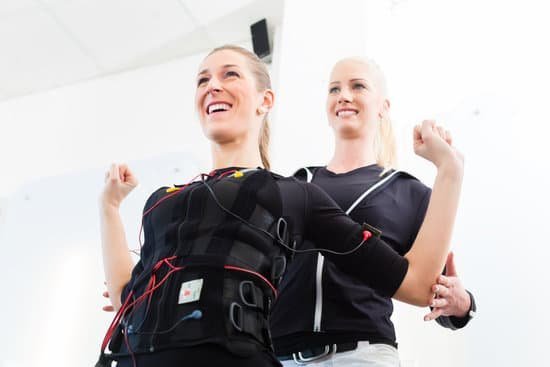When it comes to fitness and exercise, the debate between the effectiveness of single-joint exercises for enhancing functional fitness has been ongoing. In this article, we will delve into the topic of whether single-joint exercises truly have a positive impact on functional fitness.
Functional fitness refers to the ability to perform daily activities with ease and without the risk of injury, while single-joint exercises isolate specific muscles in the body. This section aims to provide an overview of these two components, setting the stage for a deeper exploration of their relationship.
Single-joint exercises focus on targeting a specific muscle group through movement at only one joint, such as bicep curls or leg extensions. These exercises are often used for isolating and strengthening individual muscles, making them popular among bodybuilders and those looking to increase muscle size and definition. On the other hand, functional fitness emphasizes the performance of everyday tasks with efficiency and reduced risk of injury by engaging multiple muscle groups in a coordinated manner.
Understanding the benefits of single-joint exercises for isolation and muscle growth requires an understanding of their impact on overall functional fitness. While these exercises may contribute to muscle development, the question remains: do they actually enhance an individual’s ability to perform daily activities more effectively? This introduction sets the stage for a thorough exploration of this topic, delving into the potential effects and controversies surrounding single-joint exercises in relation to functional fitness.
The Benefits of Single-Joint Exercises for Isolation and Muscle Growth
Single-joint exercises, also known as isolation exercises, target a specific muscle group and involve movement at only one joint. These exercises are popular among bodybuilders and fitness enthusiasts looking to add size and definition to particular muscles. By isolating a specific muscle group, single-joint exercises allow individuals to place greater emphasis on that area, which can lead to increased muscle growth and strength.
Some of the key benefits of single-joint exercises for isolation and muscle growth include:
- Targeted Muscle Activation: Single-joint exercises specifically target a particular muscle group, allowing for greater muscle activation and development.
- Improved Muscle Symmetry: By focusing on individual muscles, single-joint exercises can help improve overall muscle symmetry and aesthetics.
- Injury Rehabilitation: Isolating specific muscles through single-joint movements can be beneficial for individuals recovering from injuries or looking to strengthen weak areas.
While multi-joint compound exercises are valuable for building overall strength and functional fitness, it is essential not to overlook the role of single-joint exercises in a well-rounded training program. However, it is crucial to note that while single-joint exercises offer benefits for isolation and muscle growth, they should be balanced with multi-joint movements for comprehensive functional fitness development.
Incorporating single-joint exercises into a workout routine not only allows individuals to address specific areas of weakness or imbalance but also provides an opportunity to diversify their training regimen. Ultimately, the incorporation of both single-joint and multi-joint exercises can contribute to a well-rounded approach to functional fitness training.
The Role of Functional Fitness in Daily Activities and Overall Health
Functional fitness plays a crucial role in our daily activities and overall health. It refers to the ability to perform everyday tasks efficiently and without getting fatigued. This includes activities such as lifting groceries, climbing stairs, or bending down to pick up objects. Functional fitness is essential for maintaining independence and preventing injuries as we age. It focuses on improving strength, flexibility, balance, and coordination, which are all vital for carrying out daily activities with ease.
The benefits of functional fitness extend beyond just completing day-to-day tasks. It also contributes to overall health and well-being by promoting better posture, reducing the risk of falls, and enhancing athletic performance. Therefore, integrating functional fitness exercises into a workout routine can lead to improved physical capabilities and a higher quality of life.
In order to enhance functional fitness effectively, it is important to engage in exercises that mimic real-life movements and target multiple muscle groups simultaneously. This is where the debate about the effectiveness of single-joint exercises for functional fitness arises.
While single-joint exercises are known for targeting specific muscles and isolating them for growth, their impact on functional fitness has been questioned. Nonetheless, with proper incorporation and consideration of certain factors, single-joint exercises can still contribute to enhancing functional fitness when included as part of a comprehensive training program.
- Engage in compound movements that involve multiple joints at once
- Incorporate stability exercises that challenge coordination and balance
- Use dynamic movements that simulate real-life activities
By incorporating these types of exercises into a workout routine alongside single-joint exercises, individuals can maximize the impact on their functional fitness levels while still reaping the benefits of isolated muscle growth from single-joint exercises.
Understanding the Difference Between Single-Joint and Multi-Joint Exercises
Single-joint exercises and multi-joint exercises are two distinct types of exercises that focus on different aspects of muscle movement and strength building. Single-joint exercises, also known as isolation exercises, target a specific muscle group and involve movement at only one joint. These exercises include bicep curls, tricep extensions, and leg extensions.
On the other hand, multi-joint exercises, also known as compound exercises, involve movement at more than one joint and engage multiple muscle groups simultaneously. Examples of multi-joint exercises are squats, deadlifts, and bench press.
The primary difference between single-joint and multi-joint exercises lies in their functionality. Single-joint exercises are effective for targeting individual muscles and improving muscle definition and strength in those specific areas. They are beneficial for bodybuilders or individuals looking to develop specific muscles or address muscle imbalances. On the other hand, multi-joint exercises are more functional as they mimic everyday movements and require coordination among different muscle groups to perform tasks such as lifting, pushing, or pulling.
In terms of functional fitness, both single-joint and multi-joint exercises have their role to play. While single-joint exercises may improve isolated muscle strength, they may not directly enhance overall functional fitness unless combined with multi-joint movements that simulate real-life activities. It is important to understand the distinction between these two exercise types when designing a workout program aimed at improving functional fitness.
| Exercise Type | Primary Focus |
|---|---|
| Single-Joint Exercise | Targeting specific muscles for isolation and strength |
| Multi-Joint Exercise | Involving multiple muscles in coordinated movements for functional strength |
Debunking the Myth
Single-joint exercises have long been considered as beneficial for isolating specific muscle groups and promoting muscle growth. However, there has been a longstanding debate on whether these exercises can truly enhance functional fitness. Functional fitness refers to the ability to perform daily activities with ease and without the risk of injury. This section aims to debunk the myth surrounding single-joint exercises and their impact on functional fitness.
Understanding the Purpose of Single-Joint Exercises
Before delving into the debate, it is crucial to understand the purpose of single-joint exercises. These exercises target a specific muscle group and involve movement at only one joint, such as bicep curls or leg extensions. The primary goal of single-joint exercises is to isolate and strengthen individual muscles, which can contribute to overall muscle development when combined with multi-joint movements.
The Relationship Between Single-Joint Exercises and Functional Fitness
Many fitness enthusiasts argue that single-joint exercises do not directly translate to improved functional fitness. The rationale behind this argument is that functional fitness requires whole-body movements that mimic real-life activities, whereas single-joint exercises focus on isolated muscle groups. Critics believe that focusing solely on single-joint exercises may neglect important aspects of functional fitness, such as balance, coordination, and agility.
Weighing in on the Debate: Can Single-Joint Exercises Enhance Functional Fitness?
Despite the skepticism surrounding the effectiveness of single-joint exercises for functional fitness, some experts believe that these exercises can still play a role in enhancing overall physical performance. While it’s true that functional fitness primarily involves multi-joint movements, incorporating single-joint exercises strategically into a comprehensive training program may help address muscle imbalances and weaknesses, ultimately contributing to better functional fitness.
In light of these differing perspectives, it is evident that there are valid arguments both for and against the idea that single-joint exercises can improve functional fitness. To fully evaluate this debate, it is essential to consider scientific evidence and real-life case studies before reaching a verdict on the matter.
Case Studies and Research Findings
Several studies have been conducted to investigate the impact of single-joint exercises on functional fitness. One such study published in the Journal of Strength and Conditioning Research found that individuals who incorporated single-joint exercises into their training regimen showed significant improvements in functional fitness measures such as balance, agility, and overall flexibility.
The study concluded that while multi-joint exercises are beneficial for gaining strength and muscle mass, single-joint exercises play a crucial role in enhancing functional fitness.
Another case study focused specifically on older adults and their ability to perform daily activities. The findings revealed that participants who engaged in single-joint exercises demonstrated better mobility, reduced risk of falls, and improved independence in completing tasks such as getting up from a chair or climbing stairs. This suggests that incorporating single-joint exercises into a workout routine can have a positive impact on functional fitness, particularly for aging individuals.
Furthermore, research has also shown that targeting specific muscle groups through single-joint exercises can improve joint stability and reduce the risk of injury during daily activities. By strengthening individual muscles through isolated movements, individuals may experience enhanced coordination and proprioception, ultimately contributing to better functional performance in various tasks. These findings support the idea that single-joint exercises have a unique role in promoting functional fitness beyond just building muscle mass or strength.
Incorporating Single-Joint Exercises Into a Functional Fitness Training Program
When it comes to incorporating single-joint exercises into a functional fitness training program, it is important to understand the specific benefits these exercises can offer. Single-joint exercises target a specific muscle group and isolate that muscle, allowing for focused strength and development. By incorporating these exercises into a functional fitness training program, individuals can enhance their overall muscular strength and endurance, which are essential components of functional fitness.
One of the key benefits of including single-joint exercises in a functional fitness training program is the ability to address any muscle imbalances or weaknesses. By targeting specific muscles through isolation exercises, individuals can work on strengthening those areas that may be underdeveloped or prone to injury. This, in turn, can improve overall functional fitness by enhancing stability and reducing the risk of potential injuries during daily activities.
In addition to addressing muscle imbalances, incorporating single-joint exercises into a functional fitness training program can also help individuals improve their joint mobility and flexibility. These exercises allow for better range of motion in specific joints, which is essential for performing everyday movements with ease and efficiency.
By improving joint mobility and flexibility through single-joint exercises, individuals can enhance their overall functional fitness and reduce the risk of joint-related issues that may impact daily activities. The key is to strike a balance between single-joint and multi-joint exercises within the training program to achieve optimal results in functional fitness improvement.
Tips for Maximizing the Effectiveness of Single-Joint Exercises for Functional Fitness
When it comes to maximizing the effectiveness of single-joint exercises for functional fitness, there are a few key tips to keep in mind. These exercises can be incredibly beneficial for targeting specific muscle groups and improving overall strength, but it’s important to approach them with the right mindset and strategy. Here are some tips for getting the most out of your single-joint exercises:
Focus on Proper Form and Technique
One of the most important aspects of maximizing the effectiveness of single-joint exercises is ensuring that you are using proper form and technique. Since these exercises target one specific muscle group, it’s crucial to perform them with precision to avoid injury and achieve optimal results. Take the time to learn the correct form for each exercise and focus on maintaining good posture throughout every movement.
Utilize Progressive Overload
In order to see continued progress with single-joint exercises, it’s essential to incorporate progressive overload into your training routine. This means gradually increasing the intensity or resistance of your workouts over time in order to continually challenge your muscles. Whether it’s adding more weight, increasing repetitions, or adjusting other variables, progressive overload is key for maximizing gains from single-joint exercises.
Combine Single-Joint Exercises With Multi-Joint Movements
While single-joint exercises can be effective on their own, they can also be enhanced by incorporating them into a well-rounded workout routine that includes multi-joint movements. This approach allows you to target multiple muscle groups and prepare your body for real-life functional movements. By integrating both types of exercises, you can create a comprehensive fitness program that supports overall strength and stability.
Overall, by following these tips and staying consistent with your training, you can effectively maximize the benefits of single-joint exercises for functional fitness. With a focus on proper technique, progressive overload, and balanced workout programming, you can optimize your training regimen to achieve greater strength and functionality in everyday activities.
Conclusion
In conclusion, the debate on whether single-joint exercises enhance functional fitness is ongoing. Single-joint exercises have their benefits for isolation and muscle growth, while functional fitness plays a crucial role in daily activities and overall health. While some may argue that single-joint exercises may not directly improve functional fitness, it is important to note that incorporating these exercises into a well-rounded training program can still contribute to overall physical wellbeing.
Research findings and case studies have provided some evidence supporting the effectiveness of single-joint exercises for functional fitness. However, it is essential to understand the difference between single-joint and multi-joint exercises and how they both play a role in an individual’s fitness routine. Incorporating a variety of exercises, including single-joint ones, can help individuals work on specific muscle groups and movements that are necessary for everyday activities.
Ultimately, the decision to include single-joint exercises in a functional fitness training program should be based on individual goals, preferences, and overall fitness level. With careful planning and consideration, individuals can maximize the effectiveness of single-joint exercises for improving functional fitness and achieving their desired outcomes in terms of strength, mobility, and overall physical wellness.
Frequently Asked Questions
Why Should You Perform Multiple Joint Exercises Before Single Joint Exercises?
Performing multiple joint exercises before single joint exercises is important because it allows you to target larger muscle groups and improve overall muscle coordination and stability. By engaging multiple joints, you are preparing your body for more specific, isolated movements.
What Is a Single Joint Exercise?
A single joint exercise targets only one specific joint at a time, such as the bicep curl or leg extension. These exercises isolate a particular muscle group and may be used for hypertrophy or rehabilitation purposes. They are often performed after multi-joint exercises in a workout routine.
What Moves Improve the Benefits of Functional Fitness?
Moves that improve the benefits of functional fitness include compound exercises like squats, deadlifts, lunges, push-ups, and rows. These exercises mimic real-life movements and engage multiple muscles simultaneously, promoting better balance, strength, and coordination for everyday activities. Additionally, incorporating stability training with tools like balance boards or stability balls can enhance functional fitness benefits further.

Passionate about providing useful information to anyone with an interest in the field of Personal Training, I strive to pass on to our readers quality information and to answer any questions about Personal Trainers, the work they do and how to become one.





